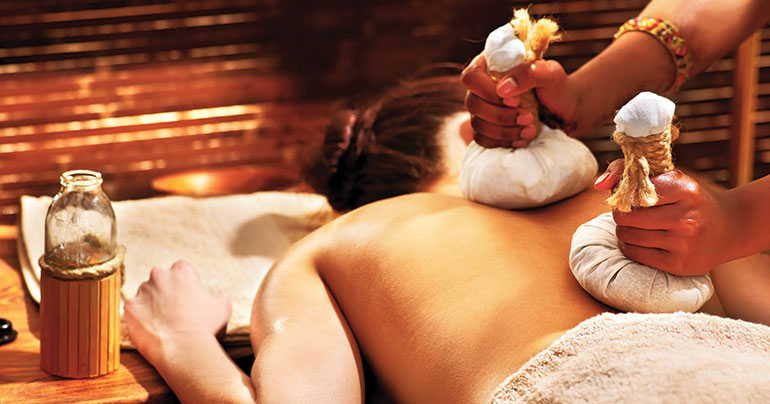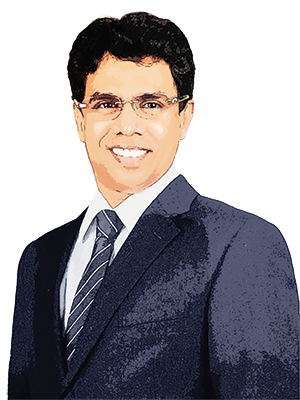Vaidya C. D. Siby has been practicing Ayurvedic medicine, one of the world’s oldest holistic healing methods, for nearly 20 years, and opened Ayur Centre in Kuala Lumpur at the turn of the century. He talked with Southeast Asia Globe about the treatments he offers and how they can complement mainstream medicine to improve clients’ lives

What are some of the most common client complaints?
It can range from common cold up to many chronic illnesses, even including autoimmune diseases… Like any other general practitioner, we get stroke patients, we get arthritis patients, we get diabetes patients… We do get gynaecological conditions related to uterus and fibroids and ovarian symptoms, [and] you also get paediatric conditions where they have common cold, asthma, bronchitis, and autism and development issues. We also have patients who suffer from psychiatric conditions [or] who also suffer from cancer.

What are the more difficult conditions to treat?
We have two schools of thought. One is Sushutra, who believed that in certain conditions surgery is needed and in certain conditions surgery is not needed. There is another school of thought called Charaka. He believed every condition can be treated by herbs and plants with no need to do surgery. Sushutra was considered the first surgeon in the world… [But] during the British invasion in India [in] about 1827… they closed all of the universities teaching Ayurveda and it’s considered 108 years of dark ages for Ayurveda… Many people have tried to regain the knowledge of the lost books and texts, but it was actually in vain. At the same time, modern surgery really grew during the Second World War, so then it was not necessary to look at that surgical part [of Ayurveda during its eventual revival]… [Instead] they concentrated on herbal medicine, introducing more herbs, [so] whenever there is a surgical condition that comes, we refer to modern physicians… [So within modern Ayurveda] the main difficulty is the emergencies and surgical conditions and infections. For example, [if] you have a chronic infection and the temperatures are going up and you are in an emergency, we are not so good at it.
Does your Ayurvedic work focus on prevention or cures?
Ayurveda contains both approaches… We do get patients who are really suffering from chronic diseases and they are coming for a cure – complete treatment. They don’t want to go through the conventional system or they already went through the conventional system [and were not satisfied]. For example, an arthritis patient will be advised [by mainstream medicine] to have painkillers and they will be taking painkillers or steroids for a long period of time. After that, they [say] it doesn’t suit them, so they would like to switch to Ayurvedic treatment… There are also patients who do not suffer from any conditions, they just say I’m healthy, I just want to maintain my health… So there, you need to do preventative measures like a detox programme, plan a diet, give them other things to do to maintain a healthy lifestyle.
Are there any ingredients or treatments that are hard to come by?
In Ayurveda, there is a programme called the panchakarma. It’s a five-treatment technique used to remove unwanted toxins from the body… which is induced emesis, where you give medications to remove unwanted toxins from the body, then you have induced purging… Then nasal inhalation, where you put medication through the nostril to clear toxins… and then you also introduce enema to remove unwanted toxins through the rectum. Then there’s [a fifth] programme called bloodletting which is called raktamokshana, where you use leeches as well as other modalities to remove the unwanted blood from the body, which our minister of health doesn’t approve… The other four techniques we do here.
[manual_related_posts]
Are there regulations that make working in Malaysia difficult?
There are certain words you’re not supposed to use in Malaysia. For example, I can’t claim I can cure certain diseases, I can only say I can treat you or I can improve you… Also, you can’t use testimonies anymore. Normally we don’t do advertising anyway, so we haven’t come across those challenges.
How do you get most of your clientele?
In the beginning when I came [to Malaysia from India], it was actually a challenging thing for us… So every month I used to have a free health talk… in the beginning five years and [from then on] wherever there is any opportunity, you go and give talks for free on the many health aspects through Ayurveda. And then I think 95% to 96% of patients who come here are word of mouth.
This article was published in the December 2018 edition of Southeast Asia Globe magazine. To subscribe to our newsletter, click here.

